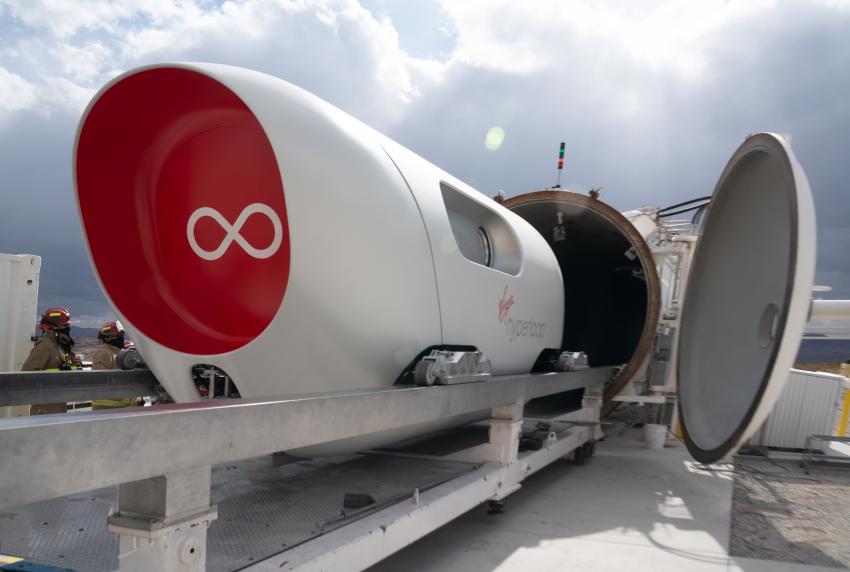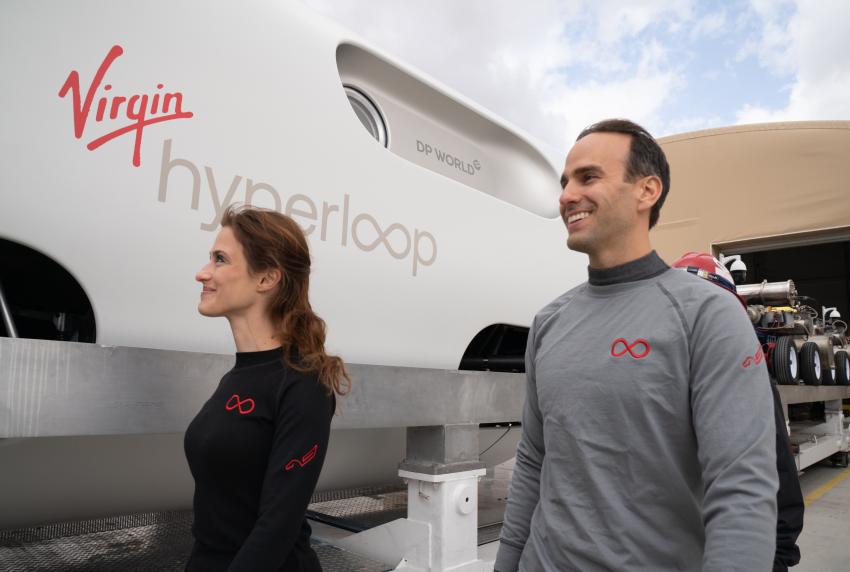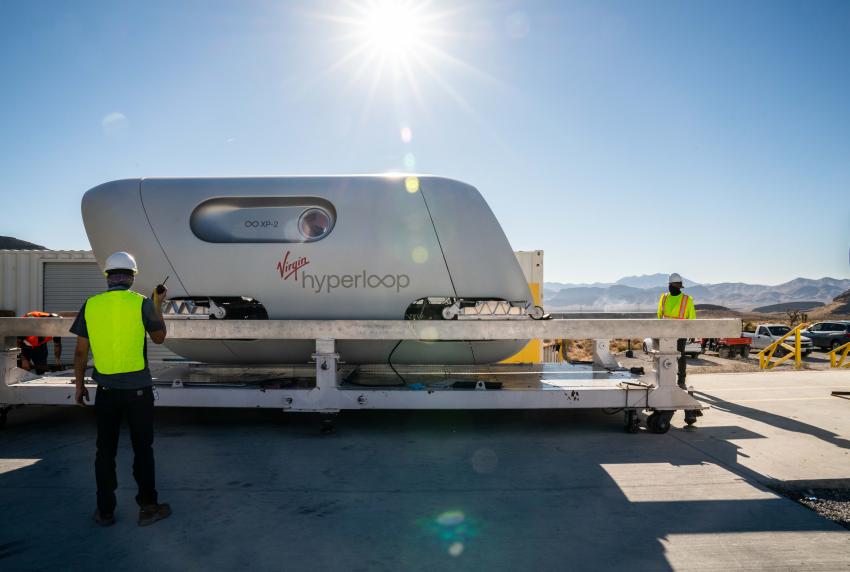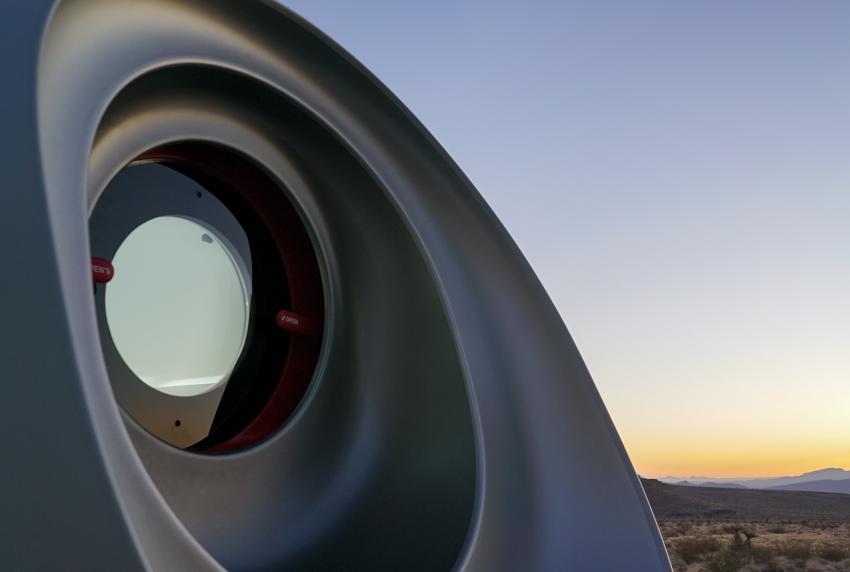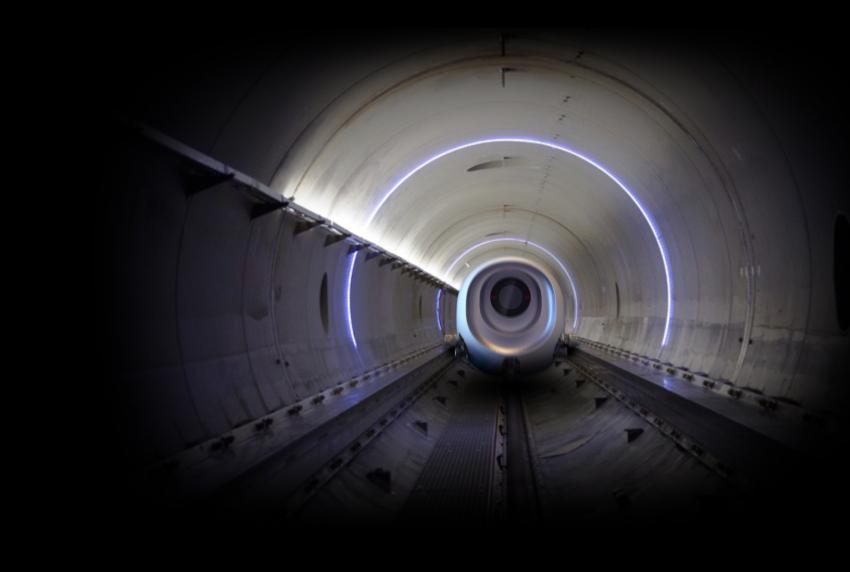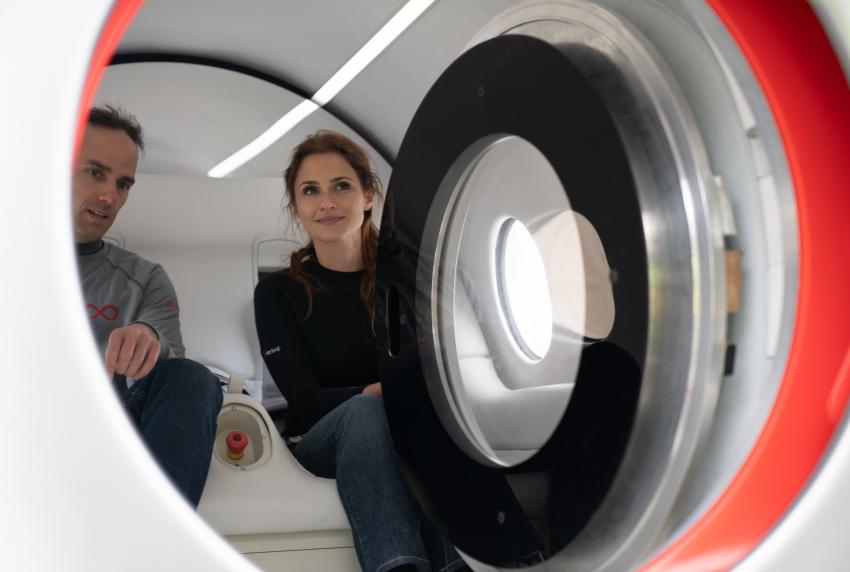Virgin Hyperloop Pegasus pod, Nevada
Designed by BIG and Kilo Design, Virgin Hyperloop’s Pegasus pod made history in the Nevada desert as it successfully carried its first passengers in the newest form of travel in over a century. Virgin Hyperloop partnered with BIG and Kilo to design Pegasus, or ‘XP-2’, a new vehicle typology for an autonomous transportation system to achieve hyperloop travel at the speed of over 1,000km/hour, the fastest form of land-based travel.
After over a year of close collaboration, the first passengers trialled this new form of transportation at Virgin Hyperloop’s 500m DevLoop test site in Las Vegas, where the company has previously run over 400 tests in un-occupied pods. The demonstration was overseen by the industry-recognised Independent Safety Assessor (ISA) Certifier, and its success marks an historic moment in transportation as Pegasus became the first manned and fully functional system for Hyperloop travel.
BIG and Kilo’s role in Pegasus was to design for this first-use case, while also defining the design language and characteristics for future Virgin Hyperloop vehicles. While the production vehicle will be larger and seat up to 28 passengers, this 2-seater pod was built to demonstrate that passengers can in fact safely travel in Hyperloop vehicles.
Pegasus is conceived as a pressurised vessel, designed inside and out as a new and radically different vehicle typology. The design focuses on unifying and covering both the pressure vessel and sled, creating a seamless appearance that combines both performance and human-centred characteristics. Since Hyperloop travel exists in a near vacuum environment, the need for aerodynamics becomes minimal, leading to a sleek design without the need for aerodynamic features.
This environment makes the transportation system much more energy efficient than traditional rail transit. It is engineered with magnetic levitation and avoids the drag of wheels, allowing for the maximum amount of speed to move the maximum number of passengers or cargo. Pegasus pods move individually as well, with a high arrival and departure rate allowing for on-demand travel.
The front ‘scoops’ of the vessel create natural steps for comfortable entry and egress, and apertures on the sides of the fairing as well as the front door contain a forward-facing window for outward viewing down the tunnel. Altogether, these features create a link to Pegasus’ external design, where repeating soft forms and pill shape cut-outs are used to highlight depth, layers and entryways.
Explore the Tenderstream archive here
Start your free trial here or email our team directly at customerservices@tenderstream.com
